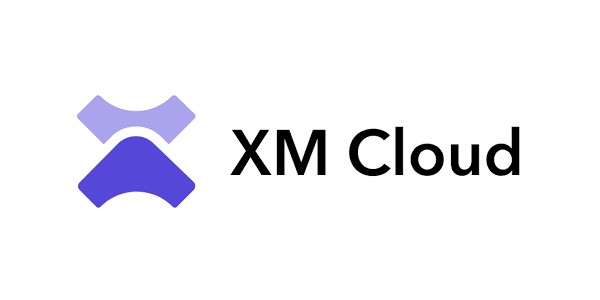The sitecore landscape has been changing for a number of years, with a significant switch towards ‘composable’ architecture, and ultimately trying to push customers towards moving to their cloud SAS provision called XM Cloud.
Benefits of moving to cloud
- Improved Scalability and Flexibility
- Cost Savings
- Improved Security and Reliability
- Automatic Updates and Maintenance
- Better User Experience
Reference: Migrating to Sitecore XM Cloud: Benefits and Considerations
In order to move to XM cloud though, the sitecore solution needs to be fully headless. This is because the SAAS offering only provides the CM instance, with no possibility to customise anything server side like pipelines, apis, viewmodels etc.
This poses a large barrier to making the change, in that we would first need to convert to headless and then make the migration to the cloud. Both of these steps are significant in their own right and would require a large amount of development and testing.
Moving to Headless
In order to first move to headless, we would need to pay for the Sitecore Headless Services module. This module is included with the more recent Sitecore subscription licenses, but would come at a significant additional recurring annual cost to those on the older perpetual licenses (i.e. where customers pay once upfront). The challenge is then to persuade budget holders that the benefits are worth the additional costs.
A Sitecore article describes the benefits of Headless as follows:
- Enhanced flexibility - deliver experiences across range of devices, like webpages, mobile apps, smartwatches
- Scalability - you can scale the front independent of back end
- Extensibility - extend the front without cost, complexity, or risk of changing back-end code.
- Stronger Security - decoupled makes it less vulnerable to attacks targeting the front-end presentation layer
- Burstable bandwidth - leverage infrastructure resources and automatically scale as demand increases
- Improved performance and SEO - deliver new content directly to target audiences, instead of routing them through a server
- Ease of use for Marketers / Developers
Reference: Headless CMS vs. traditional CMS
These all sound great, but some would argue that our current Sitecore XP offering can deliver to a range of devices, is scalable (i.e. size or number of VMs or using kubernetes) and is highly extensible. Marketers (and developers) might argue its easier to stick to what they are used too, rather than changing from what they are familiar with.
The major selling points are stronger security, increased performance and burstable bandwidth. However, you are still effectively selling an approach that will result in a very similar if not identical site, which would require a significant amount of development and a large recurring cost.
Moving to XM Cloud
Moving to the cloud also presents some more things to consider.
- Choosing the correct license - the license you choose resticts:
- number of concurrent users to 25 (Professional) or 50 (Corporate)
=> compared to unlimited on perpetual license (we currently have over 200 authors) - number of sessions (configurable)
=> compared to unlimited on perpetual license
- number of concurrent users to 25 (Professional) or 50 (Corporate)
- Parallel costs - throughout the move to cloud you pay both XM Coud licence plus
- XP license (if subscription) + Support costs
- Infrastructure costs
- Optional modules not included
- Personalise - this comes as additional cost
=> OTB the platform will offer less functionality than XP - CDP - this comes as additional cost
=> OTB the platform will offer less functionality than XP
- Personalise - this comes as additional cost
The limits on concurrent users and sessions is entirely understandable for any cloud offering. You need to be able to manage consumption of resources, if you are to guarantee a certain level of provision. A simple review of metrics should be able to determine if whats on offer would satisfy your needs, or if the cost to maintain the status quo (in terms of users) is prohibitive.
The parallel costs could be a major barrier to any move though, as the project to move to the cloud could take as long as a year. Thus resulting additional costs of several thousandpounds, hard to justify when one of the main drivers to move to the cloud is saving costs. Perhaps some kind of license freeze, until such time as the cloud site starts serving traffic might make this more manageable.
Similarly the lack of what was core fuctionality in XP may also be a barrier. I am aware that XM Cloud comes with a certain level of personalisation OTB, without the need for the additional Sitecore Personalise product. However, if this doesnt allow the level of control currently on offer, then I suspect the marketing team would push back on any move to the cloud.
Summary
After all these considerations, it was deemed that the current benefits of moving to XM Cloud did not warrant the additional costs - both in terms of financially and the amount of time and effort that would be required to facilitate the move. The combined move, first to headless, then to cloud, offer to many unknowns at significant cost.
If something could be done to allow customers on a perpetual license to try out ‘Sitecore Headless Services’ and allow them to see the benefits first hand, it might go some way to removing these barriers. This could be done by offering a ‘free’ version with reduced features - or a free trial period.
From a personal perspective, I am not yet ready to give up on a Headless Sitecore at our institution. I plan to write my own limited version of the Sitceore Layout Engine and experiment connecting that up to a NextJS Application. If all works successully, then we will migrate some areas of our site to operate headlessly and provide us with some real world data to review and guide future plans.
